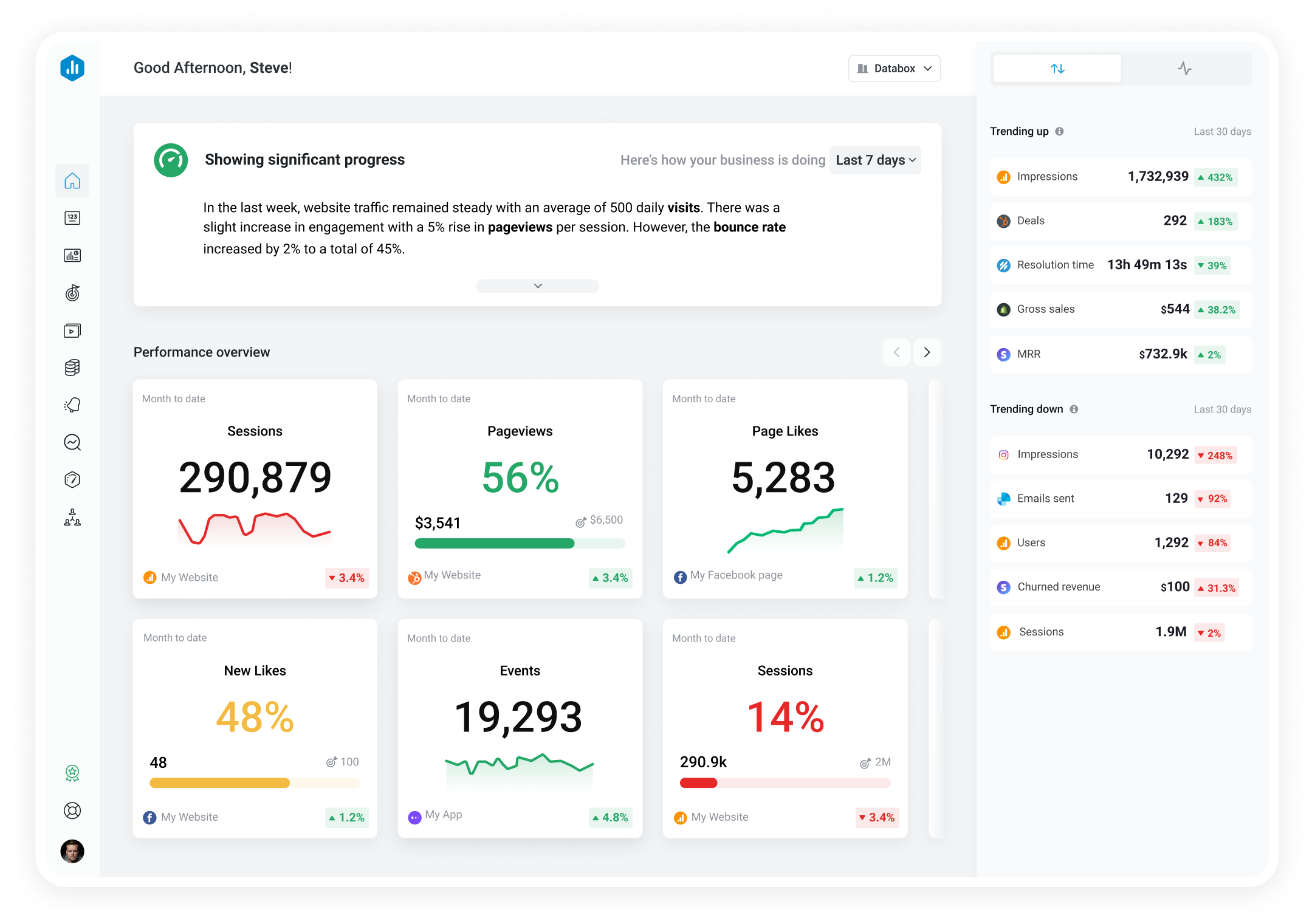Track all of your key business metrics from one screen
GET STARTED
 QuickBooks
Open Invoices Amount
QuickBooks
Open Invoices Amount Open Invoices Amount is a metric in QuickBooks that shows the total value of outstanding invoices that have not yet been paid by customers.
With Databox you can track all your metrics from various data sources in one place.

Used to show a simple Metric or to draw attention to one key number.
Databox is a business analytics software that allows you to track and visualize your most important metrics from any data source in one centralized platform.
To track Open Invoices Amount using Databox, follow these steps:
 Goals
Goals Scorecards
Scorecards Metric Digest
Metric Digest Metric Builder
Metric Builder Data Calculations
Data Calculations Performance Screen
Performance ScreenThis dashboard helps to keep high-level tabs on your overall financial health, and quickly identify points of friction slowing your success.


Stay on top of your company’s financial health with real-time P&L, balance sheet, and cash flow insights from QuickBooks. Built for business leaders, finance teams, and stakeholders to support smarter planning and decision-making.

